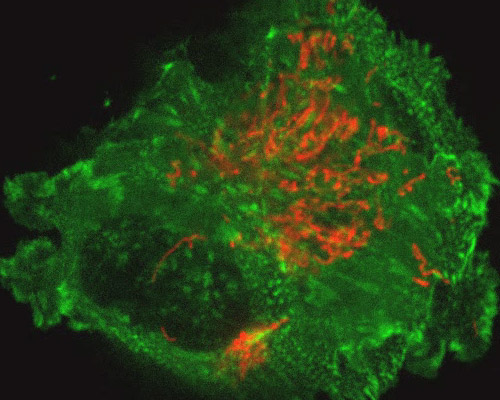Monkey Kidney Cells with mEmerald-α-Actinin and mCherry-PDHA1

Recently, studies have suggested that detection methodologies of the past were flawed, and the restrictions of these methods could account for the majority, if not all of the positive correlations of SV40 in human tumors to date. Although approximately 100 million children and adults in the U.S. may have been exposed to SV40 by polio vaccination between 1955 and 1963, there is insufficient data to support pervasive SV40 contamination, its propensity to increase tumor incidence, or a direct role for SV40 in human cancer. The dynamics of the extensive intracellular mitochondrial network were visualized in the digital video sequence in this section with mCherry fused to PDHA1.
The fluorescent protein fused to alpha-actinin, mEmerald, is a green fluorescent protein that exhibits peak excitation at 487 nanometers and peak emission at 509 nanometers. The brightness and photostability of mEmerald is superior to that of EGFP, from which it was derived. The fluorescent protein fused to PDHA1, mCherry, is one of the original members of the mFruit series of fluorescent proteins developed via the directed evolution of mRFP1. Peak excitation and emission of mCherry take place at 587 and 610 nanometers, respectively.



